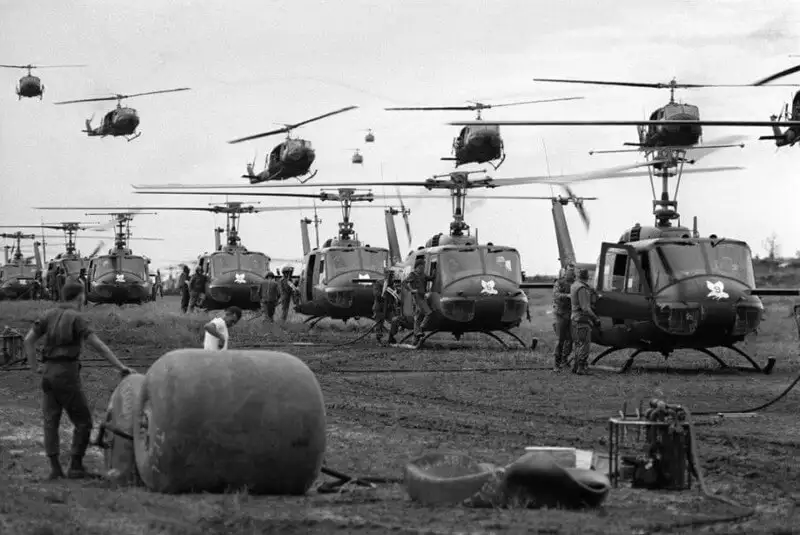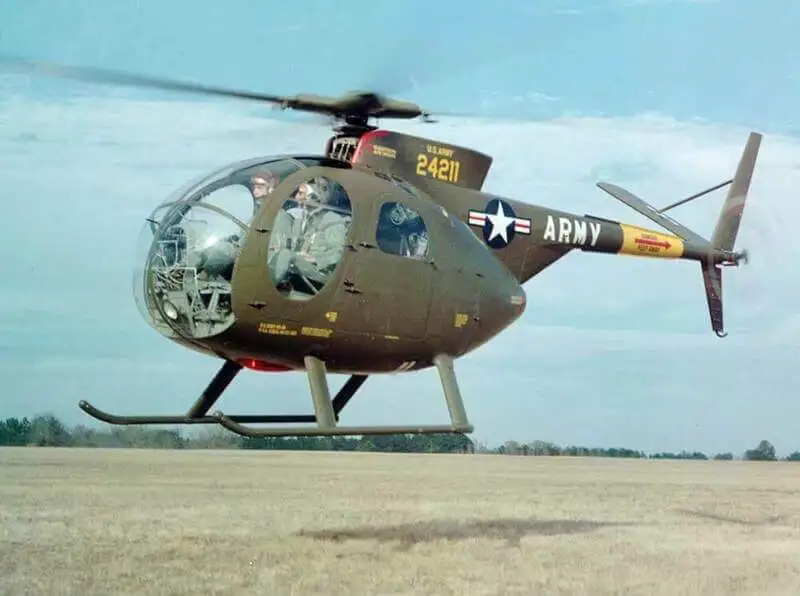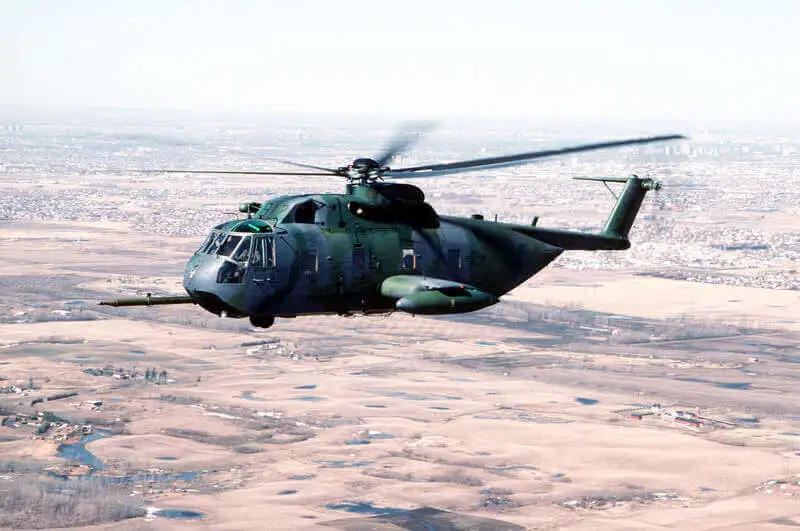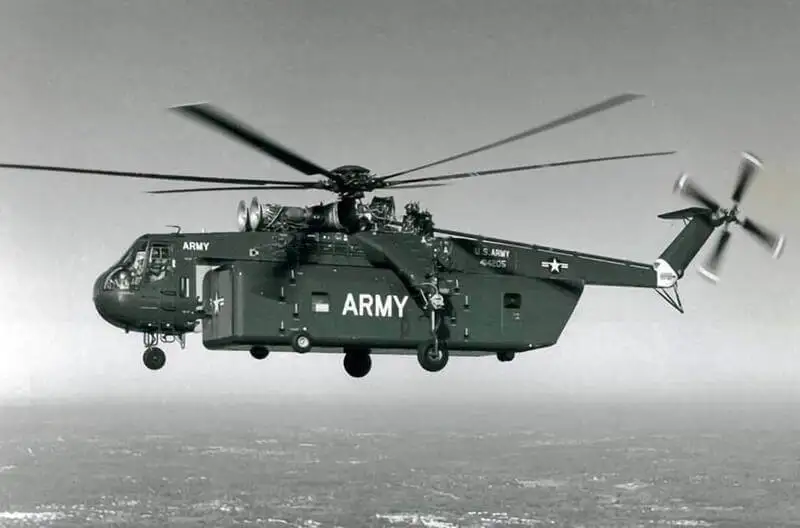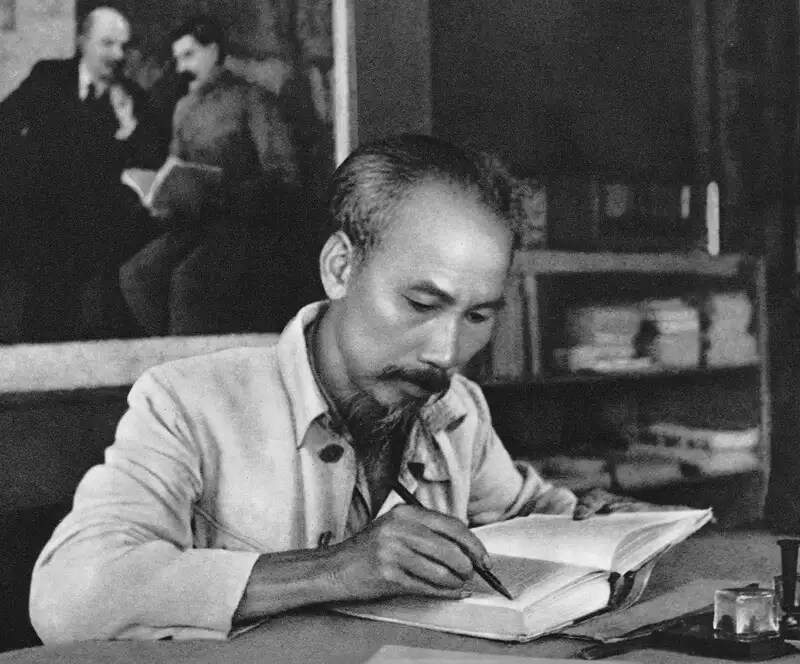The Vietnam War is often dubbed the “Helicopter War.” While helicopters had a limited role in World War II and the Korean War—mainly for medical evacuation (“medevac”)—in Vietnam, they became integral to nearly every aspect of the conflict: troop transport, reconnaissance, equipment delivery, search and rescue, and providing air support firepower for ground forces.
All branches of the U.S. military utilized helicopters in the Vietnam War. In total, nearly 12,000 helicopters were deployed, with over 5,000 destroyed.
“The Army went through helicopters at a ferocious pace during the Vietnam War,” said Robert Mitchell, director of the U.S. Army Aviation Museum at Fort Novosel. He added that young pilots, many just 19 or 20 years old, took on “the most dangerous jobs” in the war.
Helicopters like the Bell UH-1 “Iroquois” (more commonly known as the “Huey”) became so ubiquitous that they were a constant presence over Southeast Asia’s jungles and rice paddies, logging over 10 million flight hours. This made the “Huey” an enduring symbol of the Vietnam War. In the article below, Pywar highlights six of the most notable helicopters from this conflict.
Bell UH-1 Iroquois, “Huey” – The Icon of Transport Helicopters
The “UH” in Bell UH-1 stands for “utility helicopter,” and no aircraft in the Vietnam War was more widely used than the Huey—this versatile “workhorse.”
The first Hueys arrived in Vietnam in the late 1950s to perform medical evacuation (medevac) missions, often called “dustoffs,” supporting U.S. military advisors. However, it didn’t take long for the Army to recognize the Huey’s potential as a new kind of “combat aircraft” for an entirely new form of warfare. At Fort Benning, military strategists developed the “air assault” concept—a fleet of troop-carrying helicopters paired with armed escorts capable of bringing the fight to the most remote locations.
Unlike Korean War-era helicopters with internal combustion engines, the Huey and its Vietnam War contemporaries used turboshaft engines to power their rotors, making them lighter, faster, and far more powerful. As the war progressed, the U.S. Army ordered larger Huey variants for troop transport (known as “Slicks”) and attack Hueys equipped with joystick-guided rockets and heavy machine guns.
According to Mitchell, the combination of Slick troop carriers and a battalion of armed Hueys providing air support was “a perfect match.” With specialized Huey variants, the U.S. Army could deliver fully armed infantry units directly into combat zones, protected by formidable firepower from above.

- Bell UH-1 “Huey” – The iconic transport helicopter, renowned for its medevac capabilities and combat support in the Vietnam War. (Source: Collected)
Bell AH-1G Cobra, “Snake” – The Airborne Assassin of the Vietnam War
While upgraded Huey variants could serve as effective gunships, they weren’t purpose-built for attack roles. At Bell’s headquarters, engineers reimagined the Huey as a true combat aircraft. The result was the Bell AH-1G “Cobra,” often nicknamed “Snake” during the Vietnam War.
The “AH” designation stands for “attack helicopter,” and the Cobra lived up to its name with impressive firepower. Operated by a crew of two, like World War II fighter planes, the Cobra featured a primary pilot seated in the rear who could fire dozens of rockets from wing-mounted launchers. Up front, a co-pilot controlled a chin-mounted turret armed with a minigun and grenade launcher.
In an air assault, as Mitchell explains, the Cobra team would take the lead—capable of cruising steadily at 120 knots (nearly 140 mph)—delivering suppressive fire to clear landing zones for troop carriers. If a ground commander came under enemy fire, they’d “pop smoke” (deploy a smoke grenade) and call in the Cobras to neutralize the threat.
“You have to know that the guys on the ground absolutely loved the Cobra,” Mitchell said.

- Bell AH-1G “Cobra” – The “airborne assassin” with devastating attack power, paving the way for transport helicopters and supporting ground troops. (Source: Collected)
Hughes OH-6 Cayuse, “Loach” – The Premier Scout and Most Dangerous Mission
The “OH” stands for “observation helicopter,” but don’t let the name fool you; flying an OH-6 was the most perilous job in Vietnam. Nicknamed “Loach” (short for “light observation helicopter”), the Hughes OH-6 Cayuse primarily conducted reconnaissance missions, meaning it was always “looking for trouble,” as Mitchell put it. “And if you go looking for trouble, you usually find it.”
The OH-6 often operated alongside the AH-1 Cobra in “hunter-killer” missions. Loach helicopters would skim the treetops to detect enemy signs. Pilots flew so low they could spot fresh footprints or still-burning cigarette butts on the ground. However, this made them easy targets, relying on lightning-fast reflexes (and a bit of luck) to avoid disaster.
Once the enemy’s position was pinpointed, the Cobra would swoop in and open fire.

- Hughes OH-6 Cayuse, “Loach” – The daring scout helicopter, braving danger in “hunter-killer” missions across Vietnam. (Source: Collected)
Boeing CH-47 Chinook – The Legendary Twin-Rotor “Hauler”
Alongside the Huey, the twin-rotor Chinook ranks among the most iconic images of the Vietnam War.
The “CH” stands for “cargo helicopter,” and the Chinook was designed to carry astonishing loads. The largest Chinook variant in Vietnam had a maximum takeoff weight of 46,000 pounds. In the war’s final days, a single Chinook evacuated 147 South Vietnamese refugees in one trip.
In combat, the Chinook could transport 55 troops along with thousands of pounds of heavy weapons and supplies. Featuring a large, maneuverable rear cargo door, it allowed rapid loading and unloading of equipment and personnel.

- Boeing CH-47 Chinook – The legendary twin-rotor transport helicopter, a symbol of strength and hauling capacity in the Vietnam War. (Source: Collected)
Sikorsky HH-3E, “Jolly Green Giant” – The Pinnacle of Combat Rescue Helicopters
True to its nickname “Jolly Green Giant,” this was the U.S. Air Force’s most advanced combat search-and-rescue helicopter during the Vietnam War. This specialized aircraft had to meet two key demands: long-range flight capability to reach stranded soldiers and the ability to defend itself against heavy enemy fire.
To extend flight time, the Jolly Green Giant was the first helicopter equipped for mid-air refueling. For combat resilience, each was armed with two M60 machine guns, heavy armor plating, and self-sealing fuel tanks.
Perhaps its most recognizable feature was the rescue hoist, lowering courageous rescuers to the ground amid intense enemy fire to extract personnel.
“Any pilot flying in Vietnam had to be incredibly brave, but those doing rescue missions like this were on another level,” Mitchell said. “Because when you’re trying to pull someone up, you’re basically a sitting duck.”

- Sikorsky HH-3E, “Jolly Green Giant” – The cutting-edge combat rescue helicopter with mid-air refueling and a rescue hoist, aiding soldiers in battle (Source: Collected)
Sikorsky S-64 Skycrane – The “Flying Crane” of Heavy Duty
The twin-rotor Chinook was already massive and impressive, but even that “giant” was classified as a “medium-lift” helicopter. For truly heavy loads—like downed fighter jets or fully loaded shipping containers—the U.S. Army turned to the Sikorsky Skycrane.
The Skycrane featured a “stick” frame with no internal cargo bay. Without external loads, it resembled a giant “mechanical mosquito.” But with six rotor blades—each 72 feet (about 22 meters) in diameter—and a hoist system capable of lifting 20,000 pounds, little could challenge the Skycrane.
“The Skycrane was primarily used to recover other aircraft,” Mitchell explained. “If a plane or helicopter went down in a rice paddy, they’d send a DART (Downed Aircraft Recovery Team) with a Skycrane to hoist it out.”
Additionally, the Skycrane could lift a mobile troop “pod” carrying up to 90 soldiers—a creative solution for transporting large units to or from combat zones.

- Sikorsky S-64 Skycrane – The super-heavy transport helicopter with a 20,000-pound lift capacity, used for aircraft recovery and large cargo transport. (Source: Collected)
Conclusion
Reflecting on the Vietnam War, the critical role of transport helicopters is undeniable: from medevac to logistics, reconnaissance, and fire support. The Huey, Cobra, Loach, Chinook, Jolly Green Giant, and Skycrane were the “steel icons” that forged a new style of warfare where speed and flexibility were key. Young pilots, often just nineteen or twenty, fearlessly faced enemy fire. Pywar hopes this content deepens your understanding of the military might and courageous spirit of that generation, who turned engines into timeless symbols of bravery.
Translated by: Le Tuan
Source: history.com – 6 Iconic Helicopters Deployed in the Vietnam War

